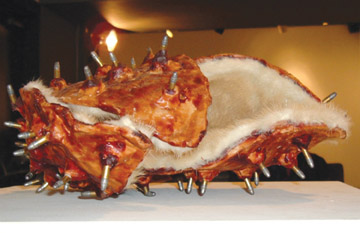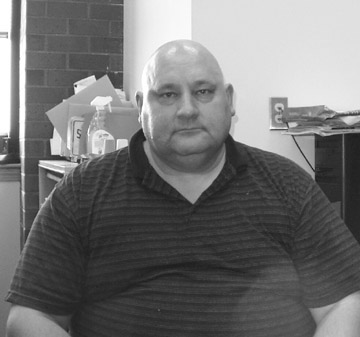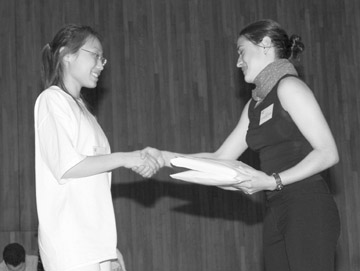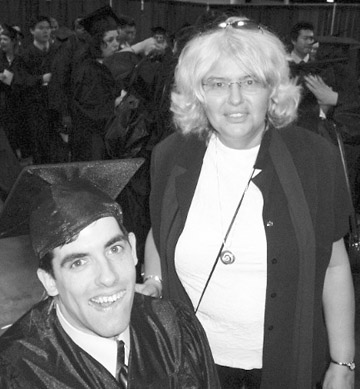Origins-Outcomes: Windshield Residue and Bronze Pears

Michelle Lougee´s fur-lined, bullet covered conch “Game” on display at the Harbor Art Gallery through April 21. – Photo by Mimi Yeh
April 15, 2004
Sculptors and students alike mingled on Wednesday, April 7 for the Boston Sculptor’s opening reception, “Origins-Outcomes,” which took place in the Harbor Art Gallery from 5:30-7:30. This exhibition showcases the consortium’s work in the Harbor Art Gallery from March 31-April 21.
The theme of the sculptures is entitled “Origins-Outcomes” because it conveys the process the artists underwent to complete their works. “Origins” is the initial phase of the work, and “Outcomes” is the completed piece. Sculptures ranged from Cast Pears to Residue: Wisconsin to California, the two most original and inviting pieces. These, in addition to other sculptures such as Between Earth and Sky and Animal Element, are for sale in the gallery.
Residue: Wisconsin to California by UMB art professor Ann Torke, created, “A conceptual drawing tracing a path cross country of the build-up on the windshield.” As Torke drove across the western part of the United States, she changed her windshield at approximately each state she passed through. Whether it’s splattered bugs or smears of mud, she shows a definite flare for the eccentric.
The description next to the piece reads, “A piece of clear acetate is gaffed to the windshield of my car, roughly one per state and changed at the cities listed on the map.” It is best to absorb this piece of artwork with the lights out so that one can examine each slide positioned above the light-box, enabling a clear view of the residue on the windshield.
Another enticing contribution to the exhibit was Laura Baring-Gould’s Cast Pears. The origin of Gould’s piece was her fascination with rotting pears on her windowsill. “For years, I have had the ability to rot fruit…The shapes and folds and gentle internal implosions became fascinating. I started rotting pears intentionally and cast the forms in bronze.”
The cast pears in bronze sit idle along a shelf in the gallery. A description of Gould’s process is highlighted in a booklet on display next to the pears. It is worth taking a trip between classes to check out the fruit.
Other artwork as noteworthy as Torke’s and Gould’s is found in the gallery. Michelle Lougee’s Game is a white fur-lined conch shell covered with wax and embedded with bullets that imitate the shell’s natural spikes. Chris Frost’s Homestead is a wooden cow head with bronze horns, similar to something out of the Old West.
Besides some of the more abstract themes, there seems to be a vein of science flavoring this collection of sculptures. Ellen Westmore’s Spina Illumina features a pseudo-creature of plastic designed to resemble “an ocean-going, air-breathing carnivore,” in her words. Westmore has taken a further, ingenious step of replacing the nervous system with electrical circuitry, the perfect metaphor for the firing of neurons.
David Phillips’ Diatoms #1 and Diatoms #2, a freestanding cone and layered concentric hemispheres, respectively, seem more like UFO mockups than anything else. Diatoms are actually microscopic algae made of silica that make up geometrically elegant marine plankton. Plankton may either be radially or bilaterally symmetrical and have a crystalline, ethereal appearance, a composition that lends itself well to art.
There will be a panel discussion for those who are curious about these eclectic pieces. All are welcome to attend an Art/Talk on Thursday, April 15 to get a head start on the “Collective Perspectives” from 1:00-2:00 p.m. in the Harbor Art Gallery on the first floor of McCormack.























































